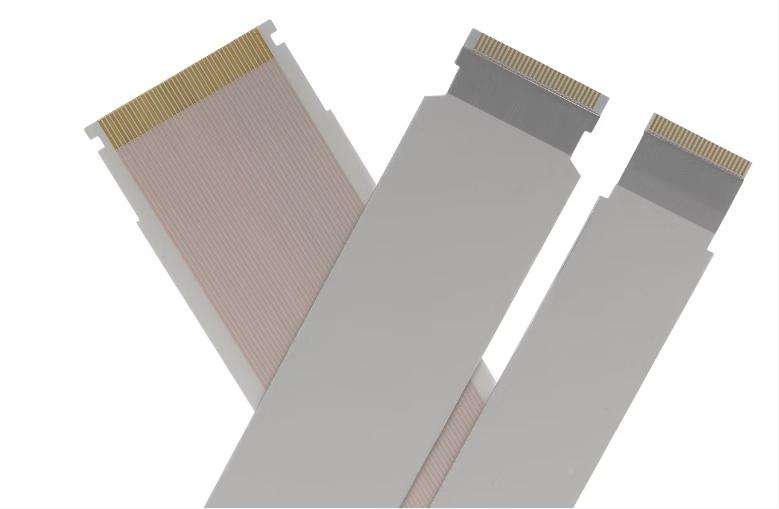Introduction to silicone cable

Silicone cable is a special cable with silicone rubber as insulation material. Silicone rubber has excellent high temperature resistance, low temperature resistance, aging resistance, chemical corrosion resistance and flexibility, which makes it perform well in many special applications. Silicone cables are widely used in harsh environments such as high temperature, low temperature, high humidity, chemical corrosion, etc. to ensure the safety and stable operation of electrical systems.
The flame retardant of silicone rubber cable includes: UL758 home appliance wiring material standard, UL62 soft wire and cable standard, UL1581 wire standard (commonly used VW-1, VW -2, FT-1, FT-2) for the wire itself. After the test is passed, the corresponding level can be marked on the wire, among which VW-1 is the highest level requirement test for vertical burning test.
The VW-1 test standard of UL silicone rubber cable stipulates that the sample line is kept vertical, and a special test blowtorch (flame height 125mm, thermal power 500W) is used to burn for 15 seconds, then stop for 15 seconds, and repeat 5 times. The qualified standards for flame retardant test are: 1) The residual flame cannot exceed 60 seconds; 2) The sample cannot be burned by more than 25%; 3) The surgical cotton pad at the bottom cannot be ignited by falling objects.
Wire and cable silicone rubber UL1581 classification outer sheath or fiber braided layer wire. Requirements before aging: elongation greater than 100%, tensile strength greater than 500 psi; aging temperature is 158℃ 60 days and 210℃ 60 days. Taking UL1581 158℃ 60 days as an example: after aging, the elongation is 50% elongation or 25% of the value before aging, and the tensile strength is 500psi strength or 60% of the value before aging (where: 1 pound force/square inch (psi) = 0.006894757 megapascals (Mpa), 1kgf/mm2 = 9.8 MPa).
Silicone cable structure
The typical structure of silicone cable includes the following parts:
1. Silicone cable conductor:
– Material: Copper or aluminum is usually used as the conductor material, and the appropriate conductor cross-sectional area is selected according to the specific application requirements.
– Structure: It can be single or multi-stranded to meet different mechanical strength and flexibility requirements.
2. Silicone cable insulation layer:
– Material: Silicone rubber is used, which has excellent electrical insulation and temperature resistance.
– Thickness: The thickness of the insulation layer is determined according to the rated voltage and use environment of the cable to ensure electrical safety.
3. Silicone cable shielding layer (optional):
– Material: Materials such as metal foil, braided mesh or copper tape can be used.
– Function: Reduce electromagnetic interference and improve the anti-interference performance of the cable.
4. Silicone cable sheath:
– Material: Silicone rubber is also usually used, which has good weather resistance and mechanical protection.
– Thickness: The thickness of the sheath is determined according to the use environment and mechanical requirements of the cable.
Advantages of silicone cables
1. Temperature resistance:
– High temperature: Silicone cables can work normally in the temperature range of -60°C to 200°C, and some special models can even withstand high temperatures up to 250°C.
– Low temperature: It still maintains good flexibility and mechanical properties at extremely low temperatures, and will not harden or become brittle.
2. Chemical corrosion resistance:
– Oil, acid and alkali resistance: Silicone rubber has good resistance to a variety of chemicals and is suitable for corrosive environments such as chemicals and petroleum.
– Hydrolysis resistance: It has good hydrolysis resistance in humid environments and is not prone to material degradation.
3. Flexibility:
– Bending radius: Silicone cables have a small bending radius, which is convenient for installation and wiring in small spaces.
– Cracking resistance: Silicone cables are not easy to crack under repeated bending and vibration environments, which prolongs their service life.
4. Electrical performance:
– Insulation resistance: Silicone rubber has high insulation resistance, ensuring that the cable works safely under high voltage.
– Breakdown strength: Silicone cables have high breakdown strength, reducing the risk of short circuits and breakdown.
5. Environmental protection and safety:
– Low smoke and halogen-free: Silicone cables produce less smoke and low toxicity when burned, meeting modern environmental protection and safety standards.
– Flame retardant properties: Silicone rubber has good flame retardant properties, which can effectively suppress the spread of fire and improve the safety of cables.
Application of silicone cables
1. High temperature environment:
– Industrial furnaces: Power and control cables for high temperature equipment such as industrial furnaces and ovens.
– Automobile engine compartment: Sensor and control system cables for automobile engine compartments.
2. Low temperature environment:
– Refrigeration equipment: Cable connections for low temperature environments such as refrigeration equipment and cold storage.
– Polar scientific research: Power and communication cables for polar scientific research stations.
3. Chemical corrosion environment:
– Chemical plant: Cable connections for pipelines, reactors and other equipment in chemical plants.
– Oil platform: Cable connections for offshore oil platforms to resist corrosion from seawater and oil.
4. Medical equipment:
– Medical devices: Power and signal cables for medical equipment to ensure reliability in high-temperature sterilization and low-temperature storage environments.
– Laboratory instruments: Cable connections for laboratory instruments to ensure stability and safety in various environments.
5. Aerospace:
– Aircraft: Internal wiring for aircraft to ensure reliability and safety in high-temperature, low-temperature and vibration environments.
– Satellites and spacecraft: Cable connections for satellites and spacecraft to ensure normal operation in extreme environments.
6. Food processing:
– Food production lines: Cable connections for food processing production lines to ensure safety and hygiene in high-temperature sterilization and cleaning environments.
TST CABLES silicone cable series product parameters
Main use of the product: mainly used for internal connection wires of industrial electrical equipment that require high temperature resistance, tensile resistance, and harsh environment;
Rated voltage range: 300V~13800V;
Rated temperature range: -150℃~260℃ (some special customized materials can reach 1200℃);
Conductor material: galvanized, nickel-plated, tin-plated, copper-plated;
Insulation material: silicone, silicone rubber;
Flame retardant test: VW-1, FT1 or FT2;
Environmental protection requirements: RoHS and REACH compliant;
Reference standard: UL758/UL1581
TST CABLES part UL cable silicone wire series models:

UL3069
UL3070
UL3071
UL3122
UL3123
UL3132
UL3134
UL3135
UL3139
UL3143
UL3144
UL3276
UL3529
UL3530
UL3640
UL3641
UL3642
UL3643
UL3644
UL3970
In addition to the above UL models, other specifications and models can also be customized. If you have the need for customized cables, you are welcome to send emails to TST CABLES engineers (EMAIL: lixiangchao@testeck.com) at any time to communicate and get free samples.
Also available in:
English





